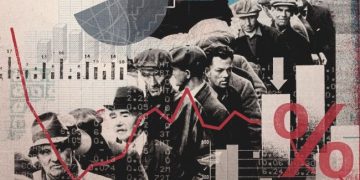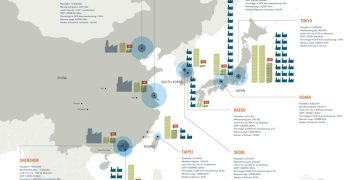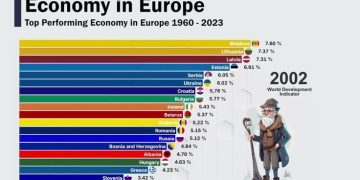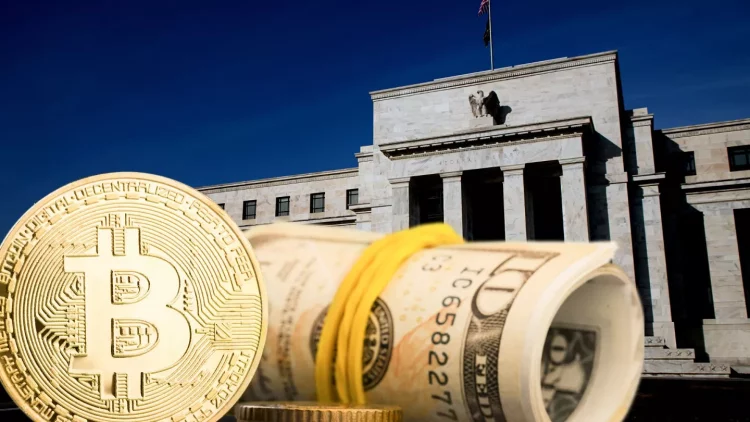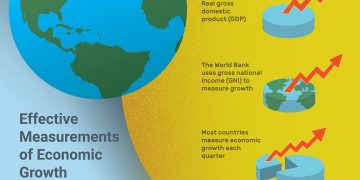U.S. monetary policy has long been a key determinant of global economic stability and market movements. As the world’s largest economy, U.S. fiscal and monetary decisions impact not only domestic conditions but also reverberate across international markets. Asia-Pacific, with its diverse and dynamic economies, is particularly sensitive to changes in U.S. policy, given its extensive trade relations and capital flows with the United States. This article explores the channels through which U.S. monetary policy affects Asia-Pacific markets, with a focus on interest rates, investment flows, currency markets, and economic performance in key Asian economies.
U.S. monetary policy is primarily governed by the Federal Reserve, the central bank responsible for managing interest rates, controlling inflation, and stabilizing the economy. One of the primary tools used by the Federal Reserve is the adjustment of the federal funds rate, which influences short-term borrowing costs across the U.S. economy. These decisions not only impact the U.S. economy but also have far-reaching consequences for global markets, particularly in Asia-Pacific. The interconnectedness of global financial markets means that changes in U.S. monetary policy are swiftly transmitted across borders through trade, investment, and financial markets. The Federal Reserve’s policies can create ripple effects, influencing interest rates, currency values, stock markets, and capital flows in Asia.
Interest rate adjustments by the Federal Reserve are one of the most direct ways in which U.S. monetary policy affects Asia-Pacific markets. When the Federal Reserve changes its interest rates, it directly impacts the cost of borrowing, the attractiveness of U.S. assets, and the flow of capital across borders. Here’s how:
- Interest Rates and Investment Flows
The Federal Reserve’s decisions on interest rates influence global investment behavior. When the Fed raises interest rates, U.S. assets such as government bonds become more attractive to investors due to the higher returns. This can lead to capital inflows into the U.S., while simultaneously reducing investment in Asia-Pacific markets. Conversely, when the Fed cuts interest rates, U.S. assets yield lower returns, pushing investors to seek higher yields in emerging markets like India, China, and Southeast Asia. - Borrowing Costs and Business Expansion
U.S. interest rate changes also affect global borrowing costs. For example, when the Federal Reserve raises rates, it becomes more expensive for companies in Asia-Pacific to borrow money from global financial markets, which could dampen their ability to invest in new projects or expand operations. On the other hand, lower interest rates in the U.S. reduce borrowing costs worldwide, which may encourage investment in Asia-Pacific. - Credit Tightening and Economic Growth
Higher U.S. interest rates can also trigger a tightening of global credit conditions. Many businesses in Asia-Pacific rely on cheap and easy credit to fund their operations, particularly in countries like China and India, where business expansion is rapidly growing. When U.S. rates rise, credit becomes more expensive, slowing down investment and consumption in these regions, ultimately leading to lower economic growth.
Let’s examine how interest rate hikes by the Federal Reserve influence specific markets in Asia-Pacific, particularly Japan, China, and India.
Japan: The Challenge of Negative Interest Rates
Japan is one of the most vulnerable countries in the Asia-Pacific region when it comes to changes in U.S. interest rates. Japan has been grappling with low or negative interest rates for years, and any rate hike in the U.S. creates significant challenges for the Bank of Japan. When U.S. rates rise, the interest rate differential between the U.S. and Japan increases, making U.S. assets more attractive to global investors. This can lead to a depreciation of the Japanese yen, which in turn affects Japan’s export competitiveness.
However, the impact on Japanese markets is more complicated. While the yen’s depreciation may help Japanese exporters by making their goods cheaper abroad, the increased cost of borrowing may hurt domestic consumption and investment, as the Japanese economy is heavily reliant on both.
China: Currency Depreciation and Capital Flight
China, as the world’s second-largest economy, is also highly sensitive to changes in U.S. monetary policy. The Chinese yuan often depreciates when the Federal Reserve raises interest rates, as the U.S. dollar strengthens. This depreciation can make Chinese exports more competitive in global markets, which may be beneficial for China’s trade balance. However, a weaker yuan also raises concerns about capital outflows, as investors seek to move their capital to more stable currencies like the U.S. dollar. This could result in increased capital flight, creating financial instability within China.
Additionally, the cost of borrowing for Chinese companies and consumers rises when U.S. interest rates increase, as the Chinese economy is deeply integrated into global financial markets. This could dampen domestic consumption and reduce economic growth, making it more difficult for China to meet its economic targets.

India: Investment Opportunities and Inflation Concerns
India, an emerging market with a rapidly growing economy, faces a complex interplay of factors when U.S. interest rates rise. On one hand, higher rates in the U.S. could drive capital flows away from India, as investors seek better returns in the U.S. On the other hand, the depreciation of the Indian rupee may make Indian exports more competitive, benefitting key sectors such as information technology and manufacturing.
However, rising interest rates in the U.S. could also contribute to inflationary pressures in India. As borrowing costs rise globally, domestic credit conditions tighten, which could slow down economic growth and reduce consumer spending. India’s policymakers must balance the need to attract foreign investment with the risk of economic overheating and rising inflation.
U.S. monetary policy also plays a crucial role in shaping currency markets across Asia-Pacific. The value of the U.S. dollar typically rises when the Federal Reserve increases interest rates, and this has significant implications for Asian currencies. A stronger dollar often results in the depreciation of local currencies in Asia-Pacific, such as the yen, yuan, and rupee, which can affect trade balances, inflation, and economic stability.
The impact of a rising U.S. dollar is particularly evident in countries that rely heavily on exports. A stronger dollar makes goods and services from Asia-Pacific more expensive for consumers in the U.S. and other dollar-pegged economies. This can lead to a slowdown in exports, particularly in industries such as technology, manufacturing, and raw materials, where price competitiveness is crucial.
Given the direct and indirect effects of U.S. monetary policy on Asia-Pacific markets, investors in the region must adjust their strategies to navigate the changing environment. Below are several approaches that can help investors protect their portfolios and seize new opportunities.
- Hedge Currency Risk
One of the primary risks facing investors in Asia-Pacific is currency volatility. As the U.S. dollar strengthens, many Asian currencies tend to weaken. Investors can use currency hedging techniques, such as forward contracts or options, to mitigate the risks associated with currency depreciation. By doing so, they can protect their returns and reduce exposure to exchange rate fluctuations. - Diversify Investment Portfolios
Given the potential for market volatility caused by changes in U.S. interest rates, diversification remains a key strategy. By spreading investments across different asset classes, such as stocks, bonds, real estate, and commodities, investors can reduce their risk exposure. Additionally, geographic diversification can help mitigate risks specific to certain regions, such as the impact of U.S. rate hikes on the Asian economy. - Monitor Emerging Markets Closely
Emerging markets in Asia, such as India, Indonesia, and the Philippines, often offer higher returns compared to more mature markets. However, they are also more sensitive to changes in U.S. monetary policy. Investors should monitor these markets closely for signs of inflationary pressures, capital outflows, or tightening credit conditions. By staying informed, investors can make timely decisions to adjust their portfolios. - Focus on Export-Oriented Sectors
As U.S. monetary policy affects currency values, sectors in Asia that rely heavily on exports can experience both challenges and opportunities. When the U.S. dollar strengthens, exporters in countries like Japan, South Korea, and China may benefit from increased competitiveness. Investors should focus on sectors that stand to gain from a stronger dollar and weaker local currencies.
In conclusion, U.S. monetary policy has profound and far-reaching effects on Asia-Pacific markets. Through interest rate adjustments, the Federal Reserve’s decisions influence capital flows, borrowing costs, currency values, and economic growth in the region. Asian economies, particularly Japan, China, and India, are highly sensitive to changes in U.S. rates, and investors must remain agile in their approach to navigate these challenges.
By understanding the dynamics of U.S. monetary policy and its impact on Asia-Pacific markets, investors can better manage their portfolios and take advantage of new opportunities that arise in a constantly changing global environment.








